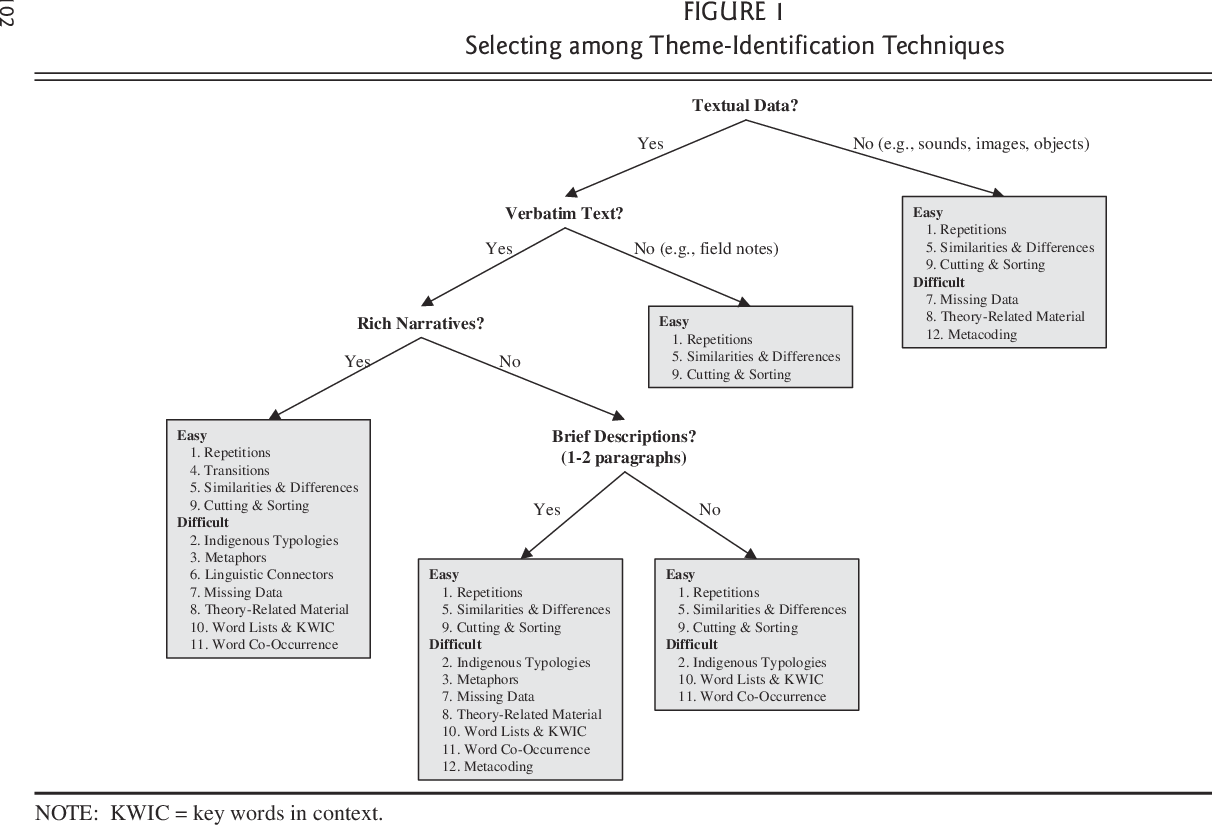Ryan, G. W., & Bernard, H. R. (2003). Techniques to Identify Themes. Field Methods, 15(1), 85–109. https://doi.org/10.1177/1525822X02239569
.
Abstract: Theme identification is one of the most fundamental tasks in qualitative research. It also is one of the most mysterious. Explicit descriptions of theme discovery are rarely found in articles and reports, and when they are, they are often relegated to appendices or footnotes. Techniques are shared among small groups of social scientists, but sharing is impeded by disciplinary or epistemological boundaries. The techniques described here are drawn from across epistemological and disciplinary boundaries. They include both observational and manipulative techniques and range from quick word counts to laborious, in-depth, line-by-line scrutiny. Techniques are compared on six dimensions: (1) appropriateness for data types, (2) required labor, (3) required expertise, (4) stage of analysis, (5) number and types of themes to be generated, and (6) issues of reliability and validity.
.
Contents (as in headings used)
- What is a theme
- HOW DO YOU KNOW A THEME WHEN YOU SEE ONE?
- WHERE DO THEMES COME FROM?
- SCRUTINY TECHNIQUES—THINGS TO LOOK FOR
- Repetitions
- Indigenous Typologies or Categories
- Metaphors and Analogies
- Transitions
- Similarities and Differences
- Linguistic Connectors
- Missing Data
- Theory-Related Material
- PROCESSING TECHNIQUES
- Cutting and Sorting
- Word Lists and Key Words in Context (KWIC)
- Word Co-Occurrence
- Metacoding
- SELECTING AMONG TECHNIQUES
- Kind of Data
- Expertise
- Labor
- Number and Kinds of Themes
- Reliability and Validity
- FURTHER RESEARCH
- NOTES
- REFERENCES
